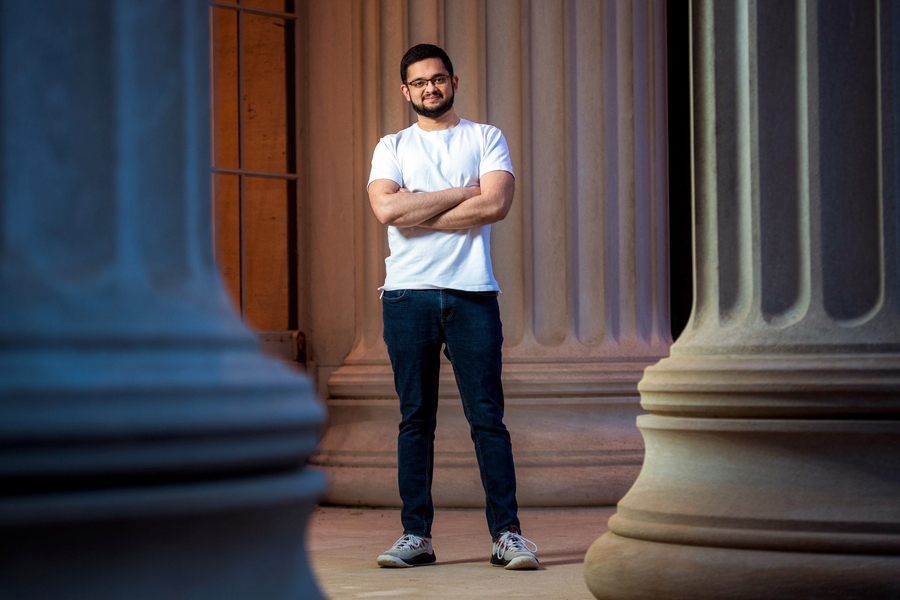Tackling air pollution in India and the developing world
Sidhant Pai was an undergraduate IDEAS grantee and has continued his work with the PKG Center as a Ph.D. student, assisting with data projects that allow the Center to better serve MIT students.

“I grew up with asthma as a kid, so bad air quality holds a visceral significance for me,” says Sidhant (Sid) Pai ’14, who spent much of his childhood in Pune, India. Located about 90 miles southwest of Mumbai, the city’s population has mushroomed over the past few decades, creating significant waste management concerns and poor air quality. Witnessing these unintended consequences of development and urbanization has shaped Pai’s interests in environmental engineering — first as an undergraduate at MIT and now as a graduate student.
“I’ve been fortunate to live in areas with relatively good air quality, but air pollution results in over a million premature deaths in India every year, heavily impacting under-served communities that live in the most polluted regions,” he says. “That’s what makes studying regional air quality in India an important and potentially impactful space.” Pai’s doctoral work is broadly motivated by his passion for human-centered environmental problem-solving.
That passion inspired him to found a social enterprise project, called Protoprint, in Pune after he finished his bachelor’s degree at MIT in 2014. The organization works collaboratively with a waste-picker cooperative, using low-cost and decentralized technology interventions to upcycle waste plastic. Protoprint provides a market-driven solution to augment waste-picker incomes while also increasing profitable recycling avenues for the city.
Pai is particularly interested in exploring translational science related to air quality and climate. “I tend to be pretty scattered in my interests,” he says laughing, “but I’m generally motivated by a sense that I’m contributing to a tangible problem that people actually care about — something that I can intuitively validate as important. I knew I wanted to work on air pollution and climate issues even as an undergrad, but felt like I needed to better understand the science if I was interested in contributing to solutions.”
Real-world solutions
Pai returned to MIT in 2017 to begin his doctoral work in civil and environmental engineering. Informed by his “fire hose” experience as an undergraduate, though, he has tried to embrace a more sanguine perspective as an MIT graduate student.
“Coming back to MIT was nostalgic!” he says, “I was happy to be back, even though the transition to being a student again was challenging. To be honest, I was pretty burnt out from the [post-undergraduate] work that I was doing in India, which was challenging in a whole different way,” he explains. “Working through p-sets and exams are stressful — don’t get me wrong — but it’s not as stressful as when you’re trying to run an organization and have people depending on you. It was almost nice to be able to just focus on my PhD and work on myself. That said, I think my experiences with Protoprint helped provide some useful perspective while I was navigating hurdles as a junior grad student, and they continue to help center me now when I get anxious or stressed.”
Now in his fifth year, Pai performs his graduate research under the guidance of Professor Colette Heald in the Atmospheric Chemistry and Composition Modeling Group. The lab focuses broadly on studying atmospheric chemistry through the use of community models — complex and collaborative numerical models that simulate atmospheric pollutants and their interactions. Hundreds of scientific groups rely on such models for their research, and their simulations often form the basis for far-reaching policy decisions on air quality management and climate change mitigation.
